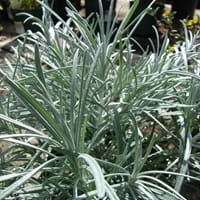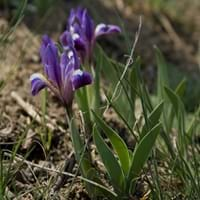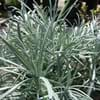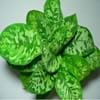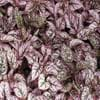Life Span
Perennial
Perennial
Type
Tender Perennial
Perennial
Origin
Central Asia
World, Pandemic, North America, Europe, Africa, Asia
Types
not available
Alizes
Bumblebee Deelite
Maui Moonlight
Langport Wren
Sarah Taylor
Titan's Glory
Thornbird
Jane Phillips
Orinoco Flow
Number of Varieties
Not Available
Habitat
Dry areas, Hot climate regions, Low annual rainfall regions
gardens, Hillside, Riverbanks, Warmer regions, Wet forest
USDA Hardiness Zone
8-11
Not Available
Sunset Zone
16, 17, 22, 23, 24
Not Available
Habit
Cushion/Mound-forming
Clump-Forming
Minimum Height
Not Available
Minimum Width
Not Available
Flower Color
Yellow
White, Yellow, Blue, Purple, Orange, Pink, Rose, Coral, Peach, Burgundy, Lavender, Plum, Orange Red, Dark Salmon, Bronze, Chocolate, Black
Flower Color Modifier
Bicolor
Bicolor
Fruit Color
Gold, Sandy Brown
Not Available
Leaf Color in Spring
Gray Green, Silver, Gray
Not Available
Leaf Color in Summer
Gray Green, Silver, Gray
Not Available
Leaf Color in Fall
Gray Green, Silver, Gray
Not Available
Leaf Color in Winter
Light Green
Light Green
Leaf Shape
Pinnate
Long Linear
Plant Season
Spring, Summer, Fall
Not Available
Sunlight
Full Sun, Partial Sun
Full Sun, Partial Sun
Type of Soil
Loam, Sand
Clay, Loam, Sand
The pH of Soil
Neutral, Alkaline
Acidic, Neutral, Alkaline
Soil Drainage
Well drained
Well drained
Bloom Time
Early Summer, Summer
Not Available
Tolerances
Drought
Drought
Where to Plant?
Container, Ground, Pot
Ground, Pot
How to Plant?
Stem Planting
From Rhizomes, Stem Planting
Plant Maintenance
Medium
Medium
Watering Requirements
Allow to dry out slightly between watering
Does not require lot of watering, Keep ground moist, Water when soil is dry
In Summer
Adequately
Lots of watering
In Spring
Moderate
Moderate
In Winter
Average Water
Average Water
Soil pH
Neutral, Alkaline
Acidic, Neutral, Alkaline
Soil Type
Loam, Sand
Clay, Loam, Sand
Soil Drainage Capacity
Well drained
Well drained
Sun Exposure
Full Sun, Partial Sun
Full Sun, Partial Sun
Pruning
Prune in spring, Remove dead leaves, Remove shoots
Remove dead leaves, Remove dead or diseased plant parts, Requires very little pruning
Fertilizers
All-Purpose Liquid Fertilizer, Put diluted fertilizers
All-Purpose Liquid Fertilizer
Pests and Diseases
Black Spot, Caterpillars, Gray mold, Leafminers, Mealybugs, Root rot, Stem rot, Thripes, Whiteflies
Bacterial Diseases, Fungal Diseases, Viruses
Plant Tolerance
Drought
Drought
Flower Petal Number
Single
Single
Fragrant Bark/Stem
Yes
No
Foliage Texture
Medium
Medium
Foliage Sheen
Matte
Matte
Attracts
Not Available
Bees, Butterflies
Allergy
Not Available
Asthma
Aesthetic Uses
Not Used For Aesthetic Purpose
Beautification, Showy Purposes
Beauty Benefits
Good for the Scalp, Improve hair condition, Improve skin condition, Improve skin tone, Natural Sunscreen, Nourishes scalp, Prevents Premature Baldness, Speed hair growth
Not Available
Environmental Uses
Not Available
Air purification
Medicinal Uses
Asthma, Cramps, Menopause problems, Menstrual Disorders, Oral health, Respiratory Disorders, Skin Disorders, Skin irritation, Weight loss
No Medicinal Use
Part of Plant Used
Root, Root bark
Flowers, Leaves, Rhizomes, Root
Other Uses
Used As Food, Used for its medicinal properties
Making Perfumes, Oil is used for aromatherapy, Used as a sedative, Used as essential oil
Used As Indoor Plant
No
No
Used As Outdoor Plant
Yes
Yes
Garden Design
Container, Edging, Hanging Basket, Mixed Border, Rock Garden / Wall
Bedding Plant, Cutflower, Mixed Border, Rock Garden, Wall
Botanical Name
HELICHRYSUM thianschanicum
IRIS
Common Name
Licorice Plant
Iris
In Portuguese
alcaçuz
Íris
Phylum
Tracheophyta
Tracheophyta
Class
Magnoliopsida
Liliopsida
Order
Fabales
Asparagales
Family
Asteraceae
Iridaceae
Clade
Angiosperms, Eudicots
Angiosperms, Monocots
Subfamily
Faboideae
Iridoideae
Number of Species
Not Available
Importance of Liquorice and Iris
Want to have the most appropriate plant for your garden? You might want to know the importance of Liquorice and Iris. Basically, these two plants vary in many aspects. Compare Liquorice and Iris as they differ in many characteristics such as their life, care, benefits, facts, etc. Every gardener must at least have the slightest clue about the plants he wants to plant in his garden. Compare their benefits, which differ in many ways like facts and uses. The medicinal use of Liquorice is Asthma, Cramps, Menopause problems, Menstrual Disorders, Oral health, Respiratory Disorders, Skin Disorders, Skin irritation and Weight loss whereas of Iris is No Medicinal Use. Liquorice has beauty benefits as follows: Good for the Scalp, Improve hair condition, Improve skin condition, Improve skin tone, Natural Sunscreen, Nourishes scalp, Prevents Premature Baldness and Speed hair growth while Iris has beauty benefits as follows: Good for the Scalp, Improve hair condition, Improve skin condition, Improve skin tone, Natural Sunscreen, Nourishes scalp, Prevents Premature Baldness and Speed hair growth.
Compare Facts of Liquorice vs Iris
How to choose the best garden plant for your garden depending upon its facts? Here garden plant comparison will help you to solve this query. Compare the facts of Liquorice vs Iris and know which one to choose. As garden plants have benefits and other uses, allergy is also a major drawback of plants for some people. Allergic reactions of Liquorice are Not Available whereas of Iris have Asthma respectively. Having a fruit bearing plant in your garden can be a plus point of your garden. Liquorice has no showy fruits and Iris has no showy fruits. Also Liquorice is not flowering and Iris is flowering. You can compare Liquorice and Iris facts and facts of other plants too.
